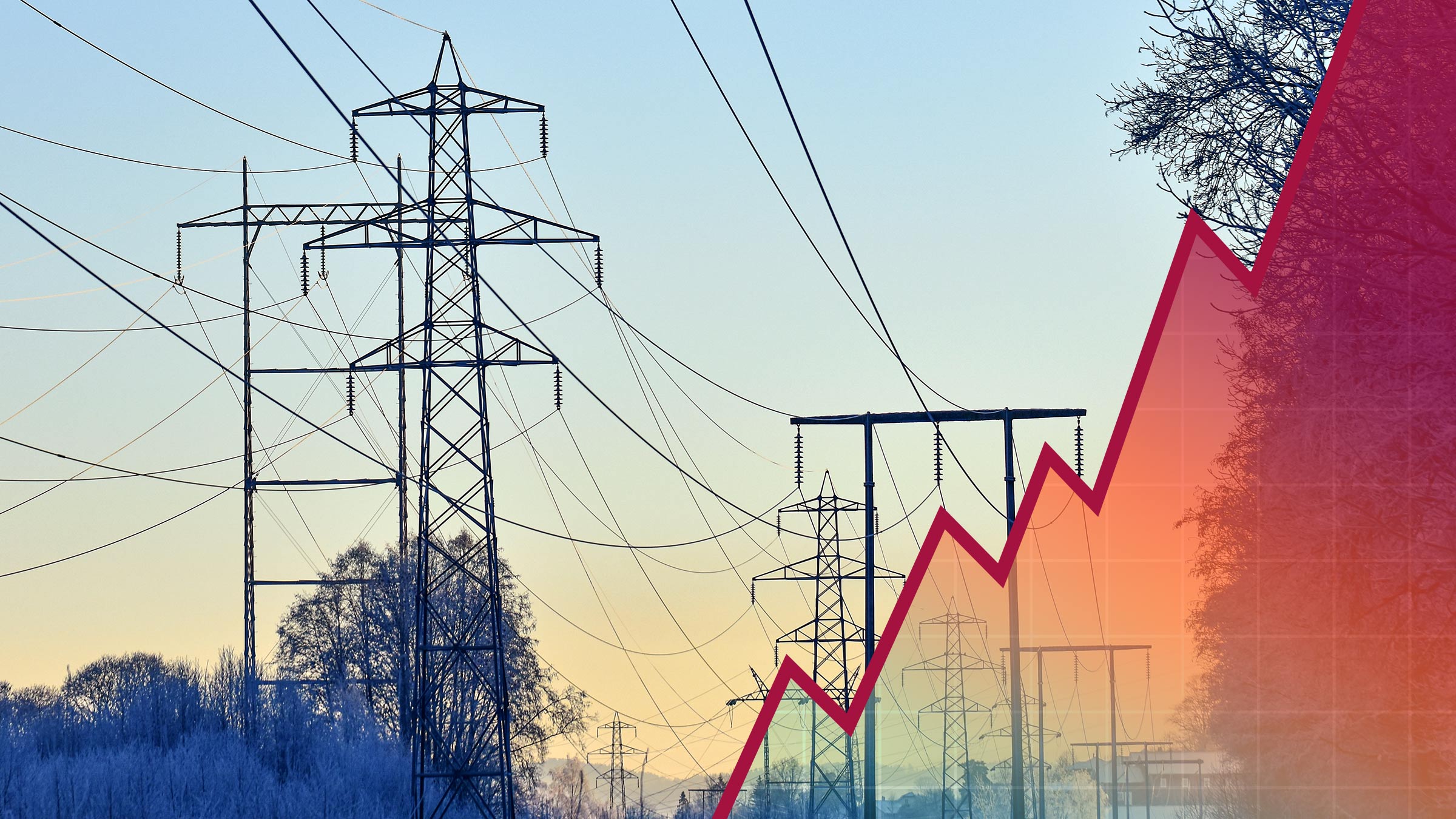Energy prices have been historically volatile: Just as they go up, they tend to come down. Over the last two years, however, household energy prices have been lingering high, reaching new limits, and demanding more from families’ budgets (Figure 1).
Prices for each household energy component as measured by the Consumer Price Index (CPI) have seen some large increases in recent years. January prices for electricity and piped gas—the two main sources of energy among households in Ninth District states—were up 24 percent (electricity) and 57 percent (piped gas) from two years earlier. Households who use less common fuels, such as oil and propane used by many in rural areas, have not been spared the tribulation, with prices of fuel oil almost doubling over the same period. Niche heating sources, like propane, wood, and kerosene—all measured under one index—rose by 26 percent.
In a region known for its brusque weather, as snow has piled up higher, so has the stress on many families. Data from the U.S. Census Household Pulse Survey1 helps paint a picture of how some households have been impacted by high energy costs.
Mounting pressures
In August of 2021, the Census Bureau began tracking households’ ability to keep up with their utility bills by asking survey takers whether they had struggled with and/or made adjustments in order to pay their bills in the last 12 months.
At that time, 13 percent of Ninth District households had reduced or foregone expenses on basics like food or medicine to pay their energy bills, 9 percent had kept their homes at unsafe temperatures, and 8 percent had been unable to pay at least part of an energy bill.
Those levels have since risen noticeably. In January of this year, 19 percent of district households sacrificed expenses on other basics, 12 percent kept the thermostat at unsafe levels, and just under 12 percent were simply unable to pay part or all of their bills (Figure 2).
The impact of high energy costs was felt unevenly across district states, with Montana residents most affected according to census data, followed by South Dakota, North Dakota, Wisconsin, and Minnesota. For instance, almost 10 percent of Minnesota households reported having struggled to pay their bills, while the share for Montana was almost 3 percentage points higher. Shares for North Dakota, South Dakota, and Wisconsin circled around 11 percent. Across all states, people more commonly chose to give up some basic consumption to avoid falling behind on their energy bills.
Lower incomes, fewer choices
Unsurprisingly, income was a factor in how households experienced and responded to higher energy costs. An average of three-quarters of households experiencing challenges with their energy bills had annual incomes under $75,000, and half had less than $50,000 (Figure 3).
A considerably larger share of households with annual incomes under $25,000 have consistently been struggling with energy costs compared with those of higher incomes.
For families toward the bottom of the income spectrum, budgets often lack the elasticity for substitutions, so it comes as no surprise that the primary difficulty for those with less than $35,000 in annual income is their ability to pay. As incomes get larger, challenges lessen, and difficulty to pay seems to level off with the ability to substitute for other goods or to sacrifice some amount comfort in their homes.
With mounting budget pressures, struggling households have increasingly sought help. A report this January from the National Energy Assistance Directors’ Association highlights the highest level of applications for the Low Income Home Energy Assistance Program in at least a dozen years. According to the association, the number of households receiving support to meet their energy needs is up by approximately 1.3 million nationwide, the largest 12-month increase in 13 years.
Racial disparities
Non-White, and in particular Black and Hispanic families, have been disproportionately challenged; 28 percent of Black and 18 percent of Hispanic households reported difficulties paying their bills, respectively almost triple and double the share of White households.
As widespread inflation competed for people’s shrinking budgets, data show an increasing share of households reducing the purchase of basic items, like food and medicine, in order to pay their energy bills. About 1 in 10 White households found themselves having to make those substitutions. For Black and Hispanic households, however, that share was 3 and 2.5 times higher, respectively. Significantly larger shares of Black and Hispanic households also reported having kept their residences at unsafe temperature levels.
While recent reports suggest energy prices may be cooling, a period of widespread inflation has bruised the finances of many district households. Some have made difficult choices to meet their basic needs; others didn’t have much to choose from. For several, and especially for lower-income and non-White households, reprieve may not be immediately felt.
Endnotes
1 The Household Pulse Survey is an experimental data product from the Census Bureau and may not meet some of its statistical quality standards.
Erick Garcia Luna is a Minneapolis Fed regional outreach director. In this role, he focuses on gathering and analyzing economic intelligence on the regional economy to help inform the work of the Fed. Follow him on Twitter @ErickGarciaLuna.






